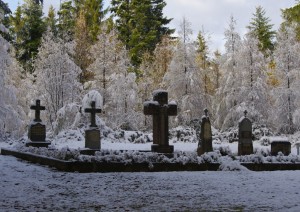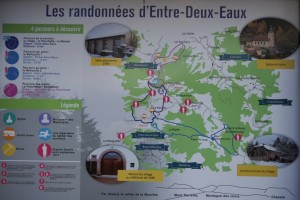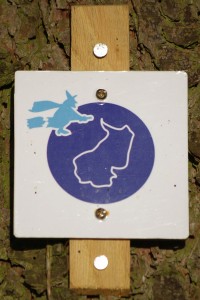To download a printable PDF version (no pictures) click on this link E2E2015no4.pdf (three A4 pages)
Click on the photographs for larger versions
Yesterday as MPs in London debated and voted on whether to join in the air strikes against IS in Syria, we frivolously took advantage of the sun and snow-free roads to drive across the Rhine to Breisach for a spot of Christmas shopping.
There was a reminder that wars have always been with us, as we stopped for lunch close to the small fortified town of Neuf-Brisach. Neuf-Brisach itself has an elegant street grid round a central square forming an octagon within star-shaped concentric earth works. It was planned as a new town in 1698 by Vauban, the military engineer of Louis XIV, to guard the border between France and the Holy Roman Empire, after France had lost the hilltop cathedral town of Breisach on the other (now German) side of the Rhine. The large family restaurant, Les Deux Clefs, in the next village of Biesheim was packed, and we soon saw why, as it had a cheap two-course menu of the day (9.90€) just like most roadside restaurants used to. So after starters of soup or tuna mayonnaise we tucked into succulent rump steak, salad and French fries (and then staggered through a very Alsatian tiramisu, over-filled with cream). Fortified, we drove on past the big industries flanking the Rhine, then crossed the bridge, wondering whether there would be any new border checks. But only on the return journey did we see a police car with flashing light, although we saw no-one being stopped.
On our return journey from Letchworth at the beginning of November, the high double metal fences leading from the Calais ferry terminal had felt very grim, with the migrant tent encampment at the end, so we were very aware of the tensions, though it must be much worse near the tunnel.
Since the November 13th massacres in Paris we have seen very few visible reactions here in Entre-deux-Eaux. I think most of the older generation feel very remote from the capital. The only tricoleur we have seen is next door – they have recently retired here from Paris. The Scrabble group in Sainte Marguerite are more outward looking, were very nervous of any travel which involved crossing or passing Paris, and a niece had reported slow border crossings from Luxembourg, presumably due to increased security. In Saint Dié over 1,000 people gathered in front of the Town Hall on November 16th, and the mayor has written strongly about maintaining the republic’s values of liberty, equality, fraternity, and secularism, whilst announcing the arming of municipal police, reinforced surveillance and video surveillance, and controlled access to public places. Ironically the day after the tragedy, the pre-arranged theme of the Philomatique history group was Djihad in the first world war. The lecturer talked about how the French army initially made no concessions to their Muslim troops regarding food, promotion or burial; he spoke of heroes and about those who deserted after the Grand Mufti’s declaration in November 1914 of Holy War against the Infidels, and concluded sombrely that we are reaping what we sowed a hundred years ago.
Over in Strasbourg it has been much tougher. Marie-Laure, who lives outside Strasbourg (near the Wolfisheim fort built under Bismark to defend Strasbourg against the French), wrote that there were very few people on the streets of Strasbourg; she described soldiers patrolling with big guns in groups of five or six and fire engines half-way out of their station doors with their crews ready to go. There were questions whether the large Christmas Market which has been held since 1570, would go ahead; it was thought it would, for financial reasons as well as bravado, but she concluded that it might lack the Christmas ambiance of peace and serenity. The market has indeed gone ahead (it lasts until Christmas Eve), but a lot of events have been cancelled, including a living nativity scene, advent concert, Telethon (the country-wide fund-raising event like Comic Relief), choirs, December 6th St Nicholas Day events, and the flame of peace. Vehicles have been banned from the large island forming the centre of Strasbourg, and the central car parks closed to all except subscribers and residents, with police checking papers and bags on each bridge. And the trams and buses are missing out some of the more sensitive stops. Marie-Laure assumes the right will gain a lot of votes in the regional elections on December 6th.
On a lighter note, we went over to one of the smaller Alsace Christmas markets in Ammerschwihr on Saturday. If you are wanting some craft ideas for Christmas, how about using your old wine corks to make a beige and boring Advent “wreath” for the front door, or threading your ripped-off beer-can-pulls to make bracelet and necklace jewellery? The snow on the highest point of our drive, the Col de Bonhomme was quite deep and looked very seasonal on and between the pine trees.
The snow scenes were lovely round us too and we have enjoyed walks on sunny days One of the most colourful was up the hill of La Behouille which lies above Entre-deux-Eaux and Fouchifol. Reverting to the war theme, it was the site of a deadly battle at the start of the first world war, and there are memorials in the clearing at the top. After we’d read them once again, John spotted a little black mole frozen, paws in the air, in the track ahead, and then quite a large group of deer bounded across and disappeared between the trees. Between the dark trunks and needles of the pines, bright yellow birch leaves glowed beneath their puff balls of snow and on the edge of the forest the trees were spraying a glittering fine mist of thawing snow.
Entre-deux-Eaux seems to have been given some money for marking out themed footpaths. John noticed the new blue dot signs when he was out with his camera one afternoon. So he walked back via the mairie and photographed the large new board displaying the four marked routes with eight points of information. This was wise, as, when we set out to walk the Mines route, there was no information apart from the mauve spots, which was a shame – perhaps not enough money for informative boards. We would have liked to discover the exact location of the (copper/lead) mines.
Later John saw two wild boar there; we have never seen live boar before, usually it’s just the damage caused by their digging (bitter memories!) and the occasional road-kill. The Behouille walk was one of the two parcours du poilu (although a lot of the fighting in the first world war was around what is labelled the sorcerers’ path). However, it’s a good start to Entre-deux-Eaux “tourism”, and we passed lots of locals out with their dogs (including a lovely St Bernard). We noticed another recent addition after a walk in the woods above Mandray: the American memorial below the col de Mandray has gained an ungainly statue. Surely not Joan of Arc inspiring the troops? No, it is a (dumpy) tribute to the women of America who gave their sons and husbands to liberate France in the second world war.
We’ve only done one of the fortnightly walks organised by the Sainte Marguerite pensioners recently. They are an opportunity to discover new walks, though we don’t bother in poor weather. This one started on the outskirts of Etival-Clairefontaine, and John was distinctly unimpressed. The leaders shot off from the meeting point in two cars which presumably had no rear-view mirrors as they disappeared out of sight and made no attempt to make sure other cars were following when they took small turnings off. Consequently, the rest of the convoy arrived at what someone thought was the starting point a few hundred metres from the walk leaders. Eventually reunited, we slogged up forest tracks and then narrow footpaths, heading towards the ridge and a popular viewpoint. As ever, people were fascinated by the pitted rock formations with names like Fairies’ Cauldron, but ignored the remains of the Pierre d’Appel gallo-roman fort which stood on the opposite side of the valley from the La Bure fort, which some of you have visited. Through the trees we could see dark storm clouds approaching, the sun was getting low in the sky and there was muttering about possible snow overnight. We thought it might be a good idea to return to the cars before it got too dark to see the treacherous tree roots underfoot, but the leader wanted us to walk on and admire the view from the promontory. It was getting colder as we reached it and we had to stand and admire for a very long time. On the way down the murky narrow footpaths (with a steep drop on one side), shots rang out below (not very comforting after events in Paris, but possibly some boar or chicken-marauding foxes meeting their end).
With snow forecast, I hastily wrapped the delicate plants, while John changed Bluto’s tyres. He then decided to order some winter tyres online for Snowy. They were to be delivered to a garage in Saulcy we hadn’t heard of, on Rue René Fonck (another reminder of past wars, with this WWI flying ace whose former “chateau” or “pavillion de chasse” lurks nearby). The garage turned out to be a farmhouse, much the same size as ours. Behind its barn doors (which are just as decrepit as ours) was a car on a ramp amid a debris of disorganised parts and a dusty counter in one corner with people sipping coffee.
It felt like a sepia cobwebbed time-warp, but the tyre-fitting was efficient and prompt. Next day the heating-oil lorry arrived, blocking our road as it trailed its fat hose across the barn to our tank and topped us up. The Christmas cake is cooked, we’ve had our flu jabs and other medical checks, so after a boiler service next week we should be ready for our Christmas trip to Letchworth. Sadly we are too late to see Jacob as a camel (a speaking part!) in the early years school nativity play, but we’re looking forward to meeting up with everyone again.
Enjoy all your Christmas preparations, and do call if you’re passing!





